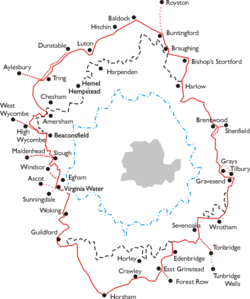London Passenger Transport Board facts for kids

London Passenger Transport Area
|
|
| Formation | 1933 (London Passenger Transport Act 1933) |
|---|---|
| Extinction | 1948 (Transport Act 1947) |
| Type | Public body |
| Purpose | Transport authority |
| Headquarters | 55 Broadway, Westminster, London |
|
Region served
|
London and within 30 miles (48 km) of Charing Cross |
The London Passenger Transport Board (LPTB) was a special group that managed all public transport in London, England, and the areas around it. This included buses, trams, and the Underground trains. They were in charge from 1933 to 1948. Most people knew them by their public name, London Transport. This name was used for many years by different groups managing London's transport.
Contents
How London's Bus Routes Got Their Numbers
Have you ever wondered how bus routes get their numbers? In London, the way bus routes were numbered changed over time. It depended on the type of service each bus route offered.
The Bassom Scheme: Early Bus Numbers
In 1924, a new system for numbering bus routes was created. It was called the Bassom Scheme. This plan was named after A.E. Bassom, who was a police chief for the Metropolitan Police. He helped create this system.
Under the Bassom Scheme, bus numbers were grouped. They were grouped by the company that ran the bus route. If a bus route was changed or was a shorter version of another, it often had a letter added to its number.
Changes After 1934
After the London Passenger Transport Board was formed in 1933, the bus numbering system was updated. This happened in 1934. The LPTB took over many different transport companies. This made it easier to create a more organized numbering system for all of London's buses.
| Preceded by Various other |
London public transport authority 1933–1948 |
Succeeded by London Transport Executive |
Images for kids



